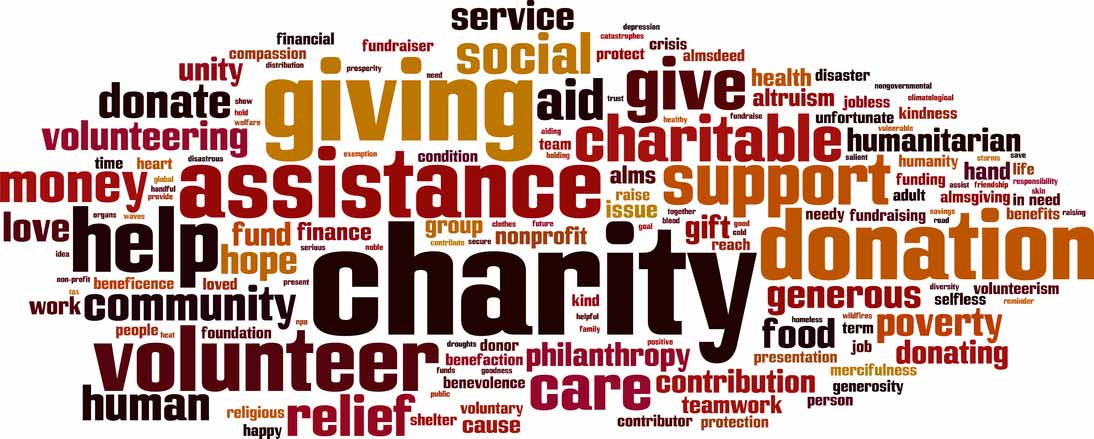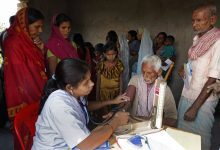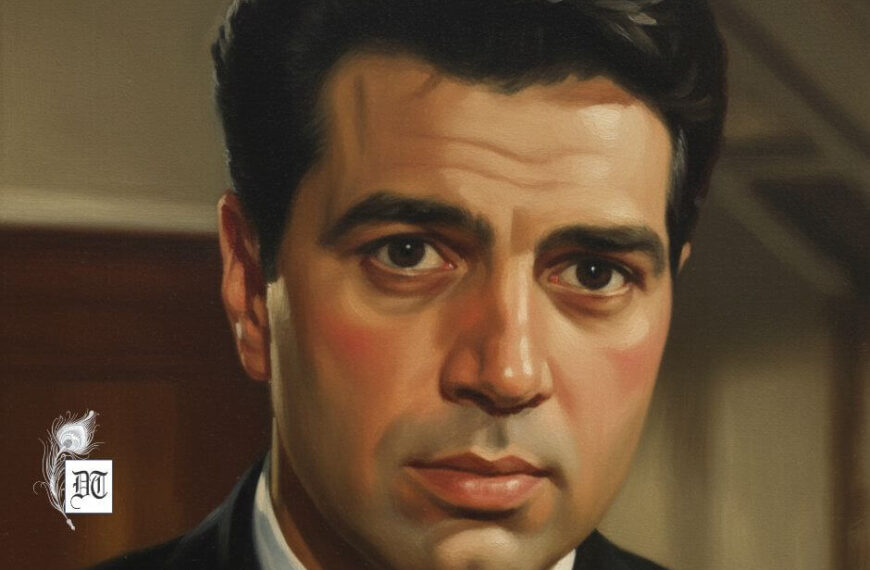Amit, our Editor-at-Large (Europe) analyses role of an India based Non-Governmental Organisation working for the torture victims of marginalised groups (such as Dalits, Muslims) using novel methods of testimonial therapy – employing it for the rehabilitation of torture victims providing voice for voiceless, mobilising human rights movement by bringing narratives of injustices of Dalits (Untouchables) into the public discourse and opens an important space for human rights redressal. He also contextualizes theories of social movement and epistemology of south, in two parts, exclusively for Different Truths.
So miserable has been our life since birth
Leaving our native places we have to live away,
Away in hills so unfortunate our lives have been;
Others enjoy delicious lentils, boiled rice
The aborigines are destined to eat coarse Kodo
So unhappy forlorn has been our life!
Displaced, discarded, we are forced to live in the hills.
(Voice of Voiceless, May 2012)
Testimonial song sang by Dalits torture victims, expressing their suffering
Increasing human rights activities have catalysed seismic social changes such as the end of the Cold War including many other local-level changes in human rights practices (cited in Brysk 2000, Tsutsui, Whitlinger, & Lim, 2012). Such social changes in forms of human rights mobilization/social movement at the grassroots level also noted in India shaping in novel forms.
This paper analyses role of an India based NGO (non-governmental organisation) working for the torture victims of marginalised groups (such as Dalits, Muslims) using novel methods of testimonial therapy (hereafter TT) – employing it for the rehabilitation of torture victims providing voice for voiceless, mobilising human rights movement by bringing narratives of injustices of Dalits (Untouchables) into the public discourse and opens an important space for human rights redressal. Against this background, this paper also will be contextualising theories of social movement and epistemology of south.
People’s Vigilance Committee of Human Rights (hereafter PVCHR) a member-based human rights NGO, started working in 1996 in Varanasi, Uttar Pradesh. PVCHR builds grassroots advocacy for human rights issues related to Dalits, tribal communities, women, children, and Muslims. Currently working at the grassroots level in over 120 villages in Uttar Pradesh, the PVCHR has a developed network of activists across India who are working to create “people friendly” villages, aimed at empowering the marginalized (primarily Dalits) and bringing positive social change in their communities (pvchr.asia).
Since 2009, PVCHR has been partnering with a Danish Institute who provided funding and training to  PVCHR for testimonial therapy (hereafter TT) project. Danish Institute developed TT as a brief narrative therapy for the healing and rehabilitation of the survivor, which is used in Chile, Sri Lanka, Cambodia, and the Philippines- have been contextualized in diverse cultural contexts (Agger, Raghuvanshi, Khan, Polatin & Laursen, 2009). As a human rights tool, TT can be perceived as a product of transnational practice of human rights which can be translated, vernacularised, replicated could take the more interactive form of hybridity with symbols, ideologies, and organisational forms generated in one location with other localities to produce new, hybrid institutions. The articulation of human rights discourse in such local spaces such as India is not new as Sally Merry (2005) example of nari adalt (women’s court) has shown.
PVCHR for testimonial therapy (hereafter TT) project. Danish Institute developed TT as a brief narrative therapy for the healing and rehabilitation of the survivor, which is used in Chile, Sri Lanka, Cambodia, and the Philippines- have been contextualized in diverse cultural contexts (Agger, Raghuvanshi, Khan, Polatin & Laursen, 2009). As a human rights tool, TT can be perceived as a product of transnational practice of human rights which can be translated, vernacularised, replicated could take the more interactive form of hybridity with symbols, ideologies, and organisational forms generated in one location with other localities to produce new, hybrid institutions. The articulation of human rights discourse in such local spaces such as India is not new as Sally Merry (2005) example of nari adalt (women’s court) has shown.
In this sense, these human rights practices (TT) are interesting, not only because Indian torture victim’s narratives are expressed in a way appeal to human rights justice, but also, these tool of human rights practices[1] (testimonial therapy induced narratives) have replicated (with some modifications) from different regions of the world. TT have successfully achieved their goals of rehabilitation of torture victims while empowering torture victims as human rights defenders, and challenging the culture of impunity and generating social movement against torture in India.
In the case of TT, as this paper will show, how idea and practice of human rights is no longer confined within the narrow limits of international human rights laws, it is embedded in social and cultural norms of a society; they are being expressed by different mode by producing emancipatory meanings (which is embedded in pre-existing relations of meaning and production, Gooddale, 2007), referenced in local epistemology of human rights as Santos (2002) would call it (narratives of torture victims).
Against this background, while highlighting the role of NGO in creating human rights movement, the paper will analyse how testimonies of Dalits torture victims being employed in seeking social justice and human rights advocacy in India.
First section of this paper will discuss about torture victims and analyse their testimony. Second section will highlight how human rights methods of testimonial therapy as a human rights strategy is employed for Dalits torture victims for rehabilitations, mobilization, and reparation. Third section will be analysing this case study in relation with different theories of social movements.
Torture Victims: Who are they?
Dalits are primary targets of Torture[2] and organized violence (hereafter TOV) who usually live in villages.D is criminated widely by the Indian society and bureaucracy, Dalits are often victim of police torture, humiliations and degrading treatment. Dalits are part of Hindu Caste system; however, they have been assigned an inferior role in the Caste system thereby discriminating against them is rampant in Indian society. There are many sub-castes within Dalits; One of sub-castes such as untouchables are Mushars (known as Mouse eaters)[3]. This paper will focus on the Case study of a Mushar who is tortured by local police in Varanasi, India. Mushars were primary target groups of PVCHR for rehabilitation.
Mushars are widely discriminated by mainstream society (in Eastern Utter Pradesh social structure is still feudal), are economically (landless), socially and politically marginalized. Mushar are still a victim of forced labour. They often have difficulty in access to the justice system. The refusal of police to investigate a case of Caste discrimination is common. It is to be noted that implication in false cases (against Mushar as the case study shows) are quite prevalent in Eastern Utter Pradesh (project area). As police implicate them in false cases in order to confess crime; they use torture for this purpose thus in this process some Mushar dies and some survive. However, those survive, are prone to re-victimization by police. Apart from health problems (due to torture), Mushar faces difficulty to integrate in society; due to false cases against them, they face stigma and humiliation in society. In Varanasi, custodial torture statistics provide a macro image of a “culture of impunity” around those who use force to maintain control (Narayan, 2009).
 Powerful elites of Varanasi (upper class of Hindu) maintain control and authority over low-castes living in Varanasi in many ways. Lives of untouchables, their presence, are very much excluded from the mainstream society, even their inclusion and exclusion in human rights discourse (Baxi, 2006) was challenged by India at the World Conference against Racism; India left no stone unturned to prevent reference to Caste based discrimination[4] out of the United Nations conference on racism held in Durban, South Africa in 2001 (also known as World Conference against Racism, WCAR). India opposed any move to internationalise issue of Caste system and asserted Caste is purely a domestic matter and international community must not interfere in it. India do not see Caste based discrimination related to racial discrimination, thus exclude Dalit’s human rights from coming under international scrutiny. Their miserable situation is reflected in the testimony of a Dalit’s torture victims, which is the part of testimonial therapy.
Powerful elites of Varanasi (upper class of Hindu) maintain control and authority over low-castes living in Varanasi in many ways. Lives of untouchables, their presence, are very much excluded from the mainstream society, even their inclusion and exclusion in human rights discourse (Baxi, 2006) was challenged by India at the World Conference against Racism; India left no stone unturned to prevent reference to Caste based discrimination[4] out of the United Nations conference on racism held in Durban, South Africa in 2001 (also known as World Conference against Racism, WCAR). India opposed any move to internationalise issue of Caste system and asserted Caste is purely a domestic matter and international community must not interfere in it. India do not see Caste based discrimination related to racial discrimination, thus exclude Dalit’s human rights from coming under international scrutiny. Their miserable situation is reflected in the testimony of a Dalit’s torture victims, which is the part of testimonial therapy.
Testimony of a Mushar torture victim:
“My name is Harinath Mushar and I am 50 years old. Apart from working in the field as a landless labourer, I make leaf plates and sell it for making a living. On February 1988, two days after Basant Panchmi [Hindu festival], we all family members were sleeping under one roof. Suddenly, at 4 a.m., there was knock at the door. My wife opened the door then, she saw the police. Two policemen barged inside and pounced on me, grabbing my arms wanted [me] to take to the police station. When they pulled me outside, then I saw Ramdev Yadev, Rambali, Vikram Pehlwan, Khanhaiya, Bhaiyalal telling the police, ‘Arrest Lalman.’ Seeing them Lalman was trying to flee. Lalman and I, both of us taken to Phulpur police station. Police continued thrashing me for 8 days and pressurised me to fall on their line and accept that we have committed the theft. Four policemen were moving over my body and pounding with a wooden stick as it seemed they were walking on the filed but not over a human being. While narrating the police’s savagery tears jerks out of my eyes. There was no one to advocate for us. Whenever any high official visited the police station, police used to hide us. Police used to give us one meal a day, it was quite difficult to take food, I used to writhe terribly in pain but then also neither they applied any ointment nor they gave any oral medicine for healing the wounds. The pain was unbearable…
Facing continues torture for 8 days in the lock up, I was sent to the jail. It was always crossed over my mind, what fate had befallen on me and suffering for whose sin, then I questioned myself is it not that I am facing it for being born a ‘Mushahar’. Waiting for my bail after two and a half, months I was released. After that, I have to appear on the hearing of my case. My incarceration pushed my family to languish in penury and my son died deprived of a proper treatment. If he would have been alive then he would have lend his helping hand in my hour of distress…
On 16th April 2002, the Court awarded imprisonment, which distanced me from my family members. On that day I and my brother, Lalman went to the Court in morning. Our name was called after the judge occupied his seat…the Judge gave the ruling, sentenced for 10 years of imprisonment and booked under 382 and 459 IPC [Indian Penal Code]. Deposit a penalty of Rs. 17,000 [Approximately Euro 214] to the Court…
It was shocking for me, my face grew red, and I started sweating. Some days after staying at Chokaghat District jail I was shifted to Central jail, I was assigned the job of cleaning the barrack and filling up water where the Pakistani prisoners were kept. After two and half year, at Central jail’s Shivpur farm, 6 inmates allocated the work of cultivating 6 acres…After putting up a hard toil covering whole of the day we were given Rs. 10 [ Approximately 0.126EUR] as a daily wage. On Sundays, we had to work but we were not paid…We used to toil hard for 30 days in a month but 15 days were entered in the register and 15 percent from our wages went as commission to the contractor…
At that time, I used to think ‘what a fate [unfortunate] had befallen on me!’ Many a times I cried and mocked on my pathetic condition. In the jail, I earned [money] through sweat and blood of my hard toil but that’s also being snatched away by others. I was put behind the bars on trumped charges without committing any crime…. I was afflicted by tuberculosis (TB) due to insufficient food and hard toil…In jail I worked in the filed for 7 years…In 2009, I asked the police officer, “When I would go home?” Then, his response was that my jail term had finished two months ago as I was unable to pay the penalty due to TB. Then he told me that I would be released on 2nd February 2011. 2nd February was day of celebration for me…the day I released.
Reaching home, I spent the entire night talking to my wife and children…Listening to their woes I cried incessantly…false case was framed against me and jailed for 10 years. I lost 10 years which won’t come back. What I want that it should not happen with others…Coming back from jail, I am no more interested to go anywhere. After being punished for so many years I started thinking myself as guilty. I think what people might be thinking about me. I am mentally disturbed. Due continuous beating and the hard toil which I put in jail for years together, there is always terrible pain in my body.” (Voice of Voiceless, 2011).
The above narrative shows, mental agony, humiliation and pain suffered by Harihar because he was Mushar – born in the caste of untouchables. He was falsely implicated, incarcerated and punished for ten years for crimes he never did. His anger and helplessness was apparent in these lines, “what fate had befallen on me and suffering for whose sin, then I questioned myself is it not that I am facing it for being born a ‘Mushahar,”. Harihar is more anguished about his being Mushar; he seems lost absolute trust in the justice system and worried about the stigmatisation he may suffer in society. From his arrest to release from prison, Harihar was never able to raise his voice, he voice was silenced by police and justice system. Later, society complicated his situation and increased his vulnerability. Harihar fears that he might be antagonized and stigmatized since he was sent to the jail.
befallen on me and suffering for whose sin, then I questioned myself is it not that I am facing it for being born a ‘Mushahar,”. Harihar is more anguished about his being Mushar; he seems lost absolute trust in the justice system and worried about the stigmatisation he may suffer in society. From his arrest to release from prison, Harihar was never able to raise his voice, he voice was silenced by police and justice system. Later, society complicated his situation and increased his vulnerability. Harihar fears that he might be antagonized and stigmatized since he was sent to the jail.
Above is a typical testimony of a torture victim from the lower caste. PVCHR take up such cases providing them TT helping them in rehabilitation creating social awareness and creating a social movement against Caste based discrimination and torture. PVCHR highlight these testimonies as a report through social media and in local newspapers attracting attention from National Human Rights Commission and local authorities.
(To be continued)
©Amit Singh
Photos from the Internet and pvchr
[1] The practice of human rights describes all the many ways in which social actors across the range of talk about, advocate for, criticize, study, legally enact, vernacularize, and so on, the idea of human rights in its different forms. Social actors refer here different individuals, institutions, states, international agencies who practices human rights within any number of different social context…(Gooddale, p.24, 2007)
[2] Torture is an intentional use of intolerable pain to destroy/damage the physical and psychological integrity of the individual and, by extension, the integrity of the family and community.
[3] https://www.youtube.com/watch?v=yAndKtzEVhA
[4] India has worked hard to prevent conference documents referring specifically to discrimination on the grounds of caste, which condemns tens of millions of people to menial jobs and abuse in India. See at http://indiatoday.intoday.in/story/india-confronts-contentious-issue-of-dalit-atrocities-at-durban-conference-on-racism/1/231082.html
#CoverStory #Dalit #Advocacy #Discrimination #CasteAndCreed #AbuseOfPeople #IndianRacialDiscrimination #DifferentTruths





 By
By
 By
By
 By
By
Testimonial therapy in Asian context developed by Lenin Raghuvanshi of PVCHR and Ms. Inger Agger,a senior researcher of Dignity: Danish Organization against torture. It developed in India then brought to different part of Asia.
Unfortunately,it is not mentioned in follows article, but it is good analysis by Mr. Amit Singh.
https://irct.org/assets/uploads/1018-8185_2015-2_22-33.pdf
http://www.differenttruths.com/governance/dissent/lenin-my-friend-empowering-the-marginal-restoring-dignity/
https://irct.org/assets/uploads/1018-8185_2015-2_22-33.pdf
http://www.differenttruths.com/governance/dissent/lenin-my-friend-empowering-the-marginal-restoring-dignity/
Testimonial therapy in Asian context developed by Lenin Raghuvanshi of PVCHR and Ms. Inger Agger,a senior researcher of Dignity: Danish Organization against torture. It developed in India then brought to different part of Asia.
Unfortunately,it is not mentioned in article, but it is good analysis by Mr. Amit Singh.